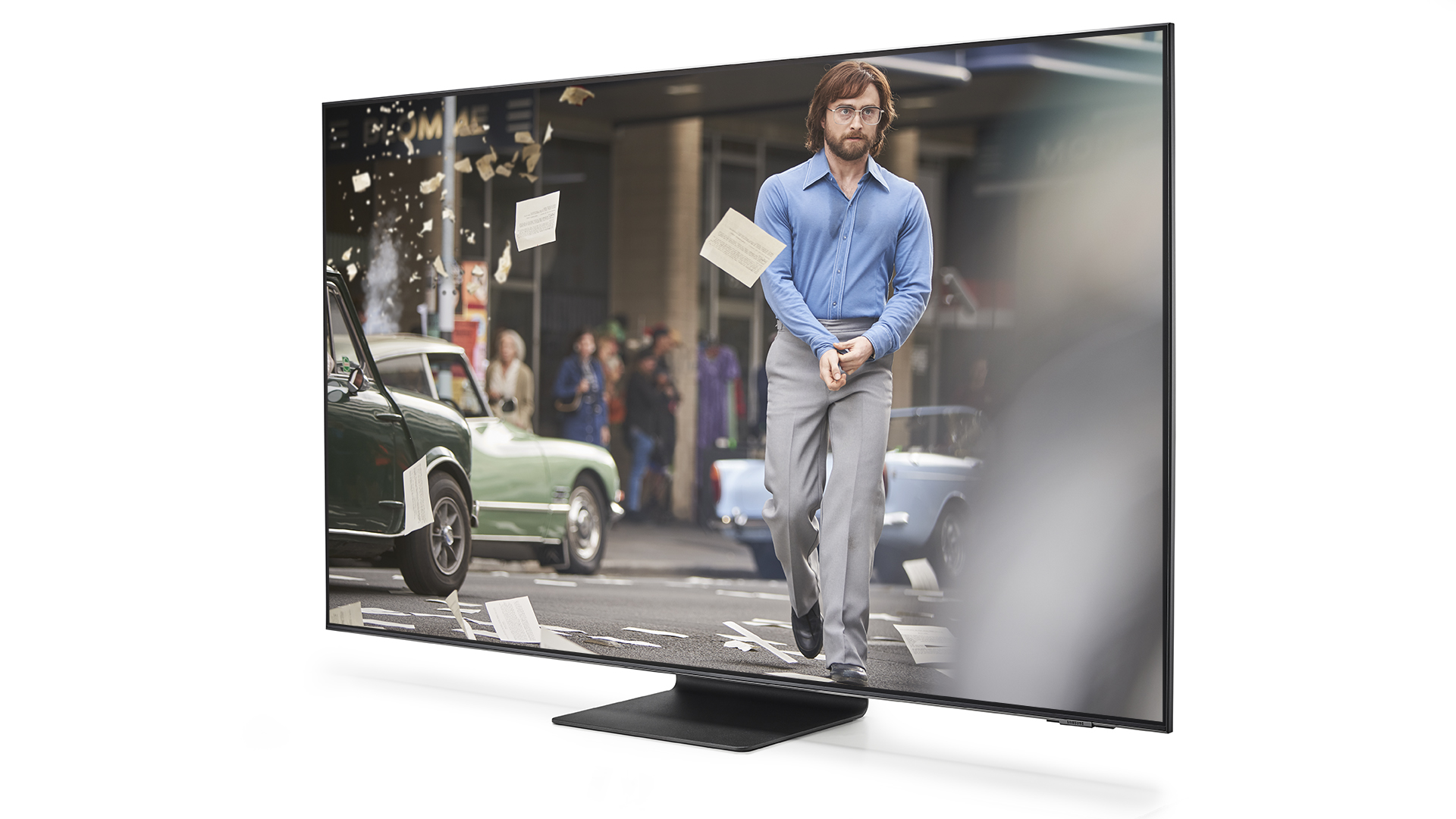Anti-OLED Samsung is about to start selling its own OLED TVs – pass the popcorn
Samsung's marketing team has really got its work cut out

You've probably seen the news that Samsung is expected to launch a range of QD-OLED TVs in 2022 and is apparently about to buy millions of OLED panels from LG. I, for one, am very excited about this, and not simply because it could result in some seriously excellent new TVs. No, I'm at least as excited by the prospect of Samsung trying to sell a range of OLED TVs having invested significant resources over the past few years into trying to convince the world that OLED is terrible TV technology.
Let there be no doubt: even a QD-OLED is an OLED TV. Each pixel contains red and green quantum dots (which also give Samsung's QLEDs their Q), but the light (and blue colour) comes from a stack of blue OLED material.
Apparently, by using blue OLEDs rather than the white diodes used in current OLED TVs, these new QD-OLEDs can go brighter, potentially overcoming or at least somewhat mitigating (we simply don't know how much brighter they might go) one of the charges regularly made against current OLED TVs by the likes of Samsung. By using quantum dots, colour volume could be improved, too, potentially solving what some consider to be another flaw in current OLED technology.
But by far the biggest charge levelled against current OLED TVs is that they're susceptible to image degradation and even burn-in. As far as we're concerned, the burn-in issue is hugely overblown – we've not experienced it first-hand in our many years of testing and living with OLED TVs – but it is possible, thanks to the organic nature of the materials; and just a casual browse of the 4K TV subreddit proves it's still a big concern for many people when considering which premium TV to buy.
While Samsung probably can't be blamed for starting the OLED burn-in fire, it's certainly gone out of its way to fan the flames, even going as far as creating a TV burn-in checker tool to help OLED owners identify burn-in (and, of course, encouraging any who find it to exchange their TV for a Samsung QLED).
So what happens when the company that's campaigned so vociferously against OLED TVs is forced to sell its own OLED TVs? I grab the popcorn, that's what.
The current thinking seems to be that Samsung will avoid using the term 'OLED' at all and will instead go with 'QD Display TV'. But there are two issues with that: 1) there hasn't been a less sexy name since Forrest Gump and 2) like it or not, OLED has become a massively marketable term that huge swathes of people associate with televisual excellence.
The latest hi-fi, home cinema and tech news, reviews, buying advice and deals, direct to your inbox.
Samsung has, therefore, got a choice: cut its nose off to spite its face and avoid a hugely popular tech term in favour of the hearing-aid beige 'QD Display TV'; or swallow its pride and admit that OLED actually is rather great.
Of course, what will probably happen is Samsung will say that it has solved all of the problems with LG's OLED technology and come up with a hybrid technology with all of the pros of QLED and OLED and none of the cons. It will probably come up with a more attractive name, too.
Whether consumers will believe that or not remains to be seen. What's more, it's really only a case that can be made for the Samsung-manufactured QD-OLEDs. What about the TVs that it's apparently set to produce using the very same LG OLED technology that Samsung's been deriding for so long? Now that's a sticky wicket.
However the company plays it, I really can't wait for Samsung's OLEDs to actually arrive, particularly the QD-OLEDs. For all of my amusement at the marketing predicament in which Samsung now finds itself, the actual TVs could be genuinely amazing. To my mind, QLED is great and OLED is great, and any hybrid of the two has the potential to be stunning.
MORE:
OLED vs QLED: which is the best TV technology?
Samsung ordering millions of OLED panels from LG, report claims
Samsung QLED/OLED prototype TVs are on the way
Check out our list of the vert best TVs you can currently buy
Tom Parsons has been writing about TV, AV and hi-fi products (not to mention plenty of other 'gadgets' and even cars) for over 15 years. He began his career as What Hi-Fi?'s Staff Writer and is now the TV and AV Editor. In between, he worked as Reviews Editor and then Deputy Editor at Stuff, and over the years has had his work featured in publications such as T3, The Telegraph and Louder. He's also appeared on BBC News, BBC World Service, BBC Radio 4 and Sky Swipe. In his spare time Tom is a runner and gamer.

